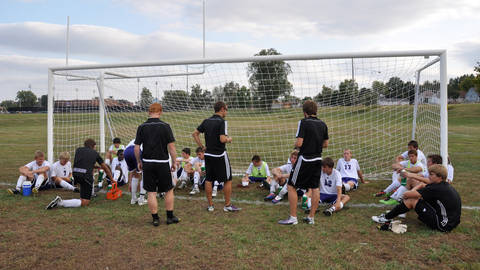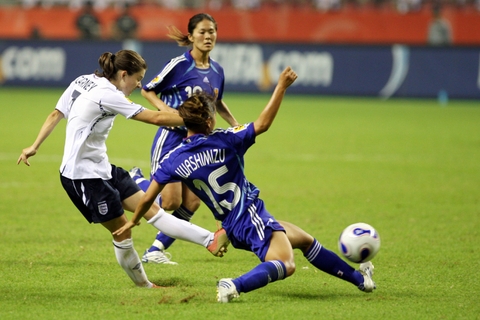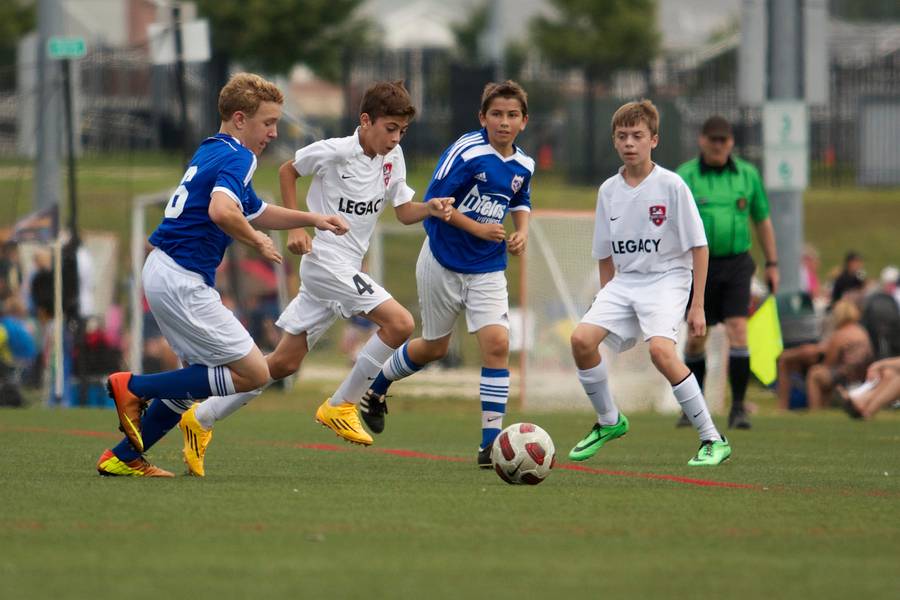Football fascinates people all around the world. Ever witnessed the excitement of a close game or the crowd cheering after a goal. But fans and onlookers frequently wonder, "How long do football games last?" when it comes to the length of the games.
This article will examine the official timekeeping of a football game, including everything from its typical duration to its potential for extension.
For those interested in exploring the world of online gaming, particularly in the realm of casino bonuses, sites like nodepositbonuscasinoz.com offer a plethora of options to enhance the gaming experience.
The 90-Minute Standard
Professional football games usually last 90 minutes, broken into two 45-minute halves. This arbitrary duration originated in the middle of the 1800s. In 1866, there was no set playtime for a match between Sheffield and London, two of the most prominent English clubs. The two teams decided on a 90-minute time limit to resolve the dispute, becoming the Standard for the game in the future.
The reasoning behind this decision is still unknown. According to some views, it was a balance between rugby matches, which were usually shorter, and cricket matches, which frequently went longer. Whatever its source, the 90-minute format was a hit and eventually embraced by regulatory authorities across the globe.
The Essential Halftime Interval
With a fifteen-minute intermission between each half of the action, players can relax, regroup, and refuel. Halftime, or the intermission, is an essential period for players to refuel and for coaches to adjust. According to the official timekeeper, the half only ends when the ball is out of play, guaranteeing that both halves are of equal length.
While a 15-minute halftime break is customary, the competition's rules may permit some small deviations. Any deviation, nevertheless, needs the referee's approval. It's interesting to note that during extra time, a quick drink break of one minute is allowed between each of the extra halves.
Commercial Breaks
The length of each commercial break, ranging from a quick 30 seconds to a longer two minutes, greatly adds to the game's total time. It's akin to the suspense between each deal of cards at a high-stakes poker table, where every moment holds the promise of excitement. The commercial breaks in football broadcasts provide opportunities for viewers to engage with advertisements, much like the diverse offerings found on platforms like GetCasinoReviews.com, where players are presented with a plethora of gaming options tailored to their preferences.
Maintaining Honesty in the Clock: The Referee's Duty
The authority figure on the field, the referee, is essential in controlling how long the match lasts. Football has a "stop clock" method, unlike other sports where a moving clock halts for stoppages. As the official timekeeper, the referee is in charge of recording any time lost for any number of reasons, including:
-
Substitutions: The timer is stopped until the player is well enough to continue or is replaced if they require medical attention while participating in the game.
-
Injuries: If a player needs medical treatment while playing, the timer is halted until the person is well enough to continue or is replaced.
-
Reviews of VARs (Video Assistant Referees): Because of the implementation of VAR, stoppages now have an additional layer. Although reviews are frequently brief, the referee may prolong the half by a small amount to make up for the time lost.
-
Additional Stoppages: Any circumstance that alters the course of the game, such as receiving a yellow or red card, celebrating a goal, or any other event, also causes time to stop.
Using the total stoppages after each half, the referee calculates the "additional time" that will be added. Even with stoppages, this extra time guarantees a fair forty-five minutes of active play for each half.
When the Game Goes Over the Scheduled 90 Minutes
Although 90 minutes is the typical length, there are a few situations in which a football match can go longer:
Extra Time: If the score is still tied at the end of regular time, the game moves into two additional 15-minute periods of extra time. Teams have one more chance to end the tie and win during this time. The referee adds stoppage time for interruptions during extra time, just like in regular time.
Penalty Shootout: In knockout tournaments such as cup finals, a penalty shootout is used to determine the winner if the score is tied after extra time. The team with the most successful penalties wins. Each side takes turns trying penalties from the penalty spot. The penalty shootout's length varies depending on how many penalties are made and missed.
Differentiations at Various Levels: Youth Football and Beyond
Senior and professional football games are played in the traditional 90-minute style. The length is frequently changed for younger age groups to accommodate their attention spans and physical limitations. Youth games usually last half an hour, with smaller players playing for thirty minutes and teens playing for forty minutes.
There may also be variations in leagues or contests where rules govern the duration of matches. These variations, meanwhile, are usually insignificant and uphold the fundamental idea of two parts with a predetermined time.
Conclusion
When one asks, "How long do football games last?" one discovers a complicated web of scheduled play, commercial breaks, and scheduling conflicts. Even though the game clock may indicate an hour of play, supporters' experiences span far more extended periods. Thanks to a clever combination of action, strategy, and entertainment, the 60-minute game is transformed into an event that can occupy an afternoon or evening with a captivating sporting spectacle.
The moments that comprise the game's story, the ups, and downs that keep spectators on the edge of their seats, are, in essence, what makes a football game go longer than merely the amount of time on the clock.


















